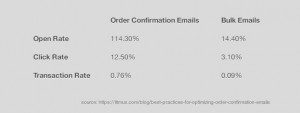As customer service leaders continue to embrace the life where agents can work from where they’re most comfortable, new challenges catapult to the top of priority lists.
Gartner research shows in two years, nearly nine in 10 leaders think 20-80% of the customer service workforce will still work from home. The trend we once saw as an industry outlier is here to stay. And with it comes the need to prioritize new ways to engage employees and keep tabs on performance.
But how can you effectively coach and improve the performance of a dispersed workforce? And, what tools exist out there to help you?
Turns out, customer service analytics, including speech analytics, is one of the five technology trends in Gartner’s customer experience hype cycle this year.
Ramping up quality management in your call center is crucial to keeping performance high and teams operating in sync, no matter where they’re working. And using data from real customer conversations gives you the context you need to effectively coach your team. That’s why I’m diving in on how to use speech analytics to improve coaching and engagement in your call center.
What can speech analytics do for my call center?
Speech analytics tools help you transcribe and analyze the interactions that flow into your contact center, so you can act faster to refine your customer experience.
“Interaction analytics enables companies to measure and quantify the impact of their actions on their customers and prospects.”
With the right call center tools, you can transcribe each customer conversation. Then, you can search through those transcriptions to report and coach on agent-customer interactions.
You gain valuable insight into the voice of your customers and identify patterns and trends in interactions to improve operational efficiency and agent performance. With speech analytics, you can act on your data and share more context as you train your team. That way your agents understand how their performance impacts every customer conversation (and how they can continue to do better).
3 Ways to Use Speech Analytics to Improve Your Call Center Coaching
1. Scan through transcribed interactions to coach faster
When you can store all your recordings and transcriptions in one place, coaching gets easier. And, when you can search through interactions and report on them in your call center’s reporting engine, you can pull out the most important insights in record time.
Use speech analytics tools to transcribe and analyze customer conversations so you and your supervisors can fly through interactions and coach often. The average manager spends 35% of their time looking for coaching opportunities and only 7% of their time actually coaching. Imagine how much you could improve your customer experience if you switched those two statistics?
When you pair speech analytics tools with an omnichannel contact center platform, you don’t have to dig through tons of systems to find interactions. All your systems sync up and share customer information. And, some modern quality management tools (like Sharpen’s) even let you search for, then review interactions in a collaborative training module.
You type interaction criteria into a search bar, scan through interactions that match the criteria, then add color-coded comments to the transcripts for your agent’s review. Or, you can create a specific coaching queue and funnel recordings there for later review.
2. Monitor for trigger words in customer conversations
Not only do searchable transcriptions help you scan through and coach on interactions faster, but they help you identify recent interactions that need attention.
Cherry-picking calls and chats to review at random isn’t the best way to monitor your call center quality or agents’ performance. You leave coaching up to chance when you pick a few interactions to review with no strategy.
Instead, use speech analytics with searchable transcriptions to monitor for keywords that signal a problem (or an opportunity) in your customer journey. Maybe you want to monitor for words like “angry” or “cancel.” Or, maybe you want to watch out for customers who mention your top competitors, so you can flag down and review interactions where customer loyalty is at risk. Then, you can swoop in to help agents problem-solve for these customers and lower your churn.
“Automating the quality monitoring process improves the pace and accuracy of insights into agent performance, and provides agents with objective, targeted and timely information about what they need to improve and what they are doing right.”
Set up real-time alerts for interactions that mention your pre-identified trigger words and need attention.
Once you have alerts and conditions set, use the info you find to:
- Send agents relevant coaching lessons
- Handle any escalations
- Follow up with customers who had a bad experience
- Create scripts and knowledge base articles to help your agents handle future situations on their own
- Prevent agents from repeating bad behaviors
3. Automate coaching lessons based on the insights you find
Collaboration is a leading area of concern as contact center leaders create operating models for a post-pandemic future. (Wow, saying post-pandemic never gets old.)
“Service leaders have invested in collaboration technologies, but they should make sure they also create opportunities for collaboration, model collaborative behavior and reward collaboration when it occurs to ensure that the technology is used.”
– Gloria Omale, for Gartner
So, what’s one way you can collaborate with your agents and model collaborative behavior?
Use your speech analytics and transcription technology to pinpoint areas for coaching. Then, coach proactively to prevent repeat issues in future customer interactions. Leave comments and feedback on interactions, coaching based on what you learn from conversation transcriptions and recordings.
Here are a few ways you can automate and improve coaching efficiency with speech analytics:
- Use bots to automatically deliver instructional microlearning lessons into agent queues.
- Highlight key pieces of each transcript to give agents context for where to improve or where to repeat standout moments.
- Set up a workflow to automatically find and preemptively route interactions ideal for coaching using predetermined criteria.
- Use scorecards to grade each interaction and send it back to your agents alongside the transcription.
Putting these ideas into action means you’re working with agents to solve problems for customers. And, you help agents feel more connected to their roles and leaders in the process – creating a collaborative work environment for both remote workers and in-office employees.
Your Step-By-Step Guide to Building Better Customer Experience Strategies
Use data you already have to build actionable strategies for a better customer experience
Business & Finance Articles on Business 2 Community
(51)
Report Post





